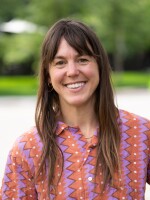On a Wednesday morning in April, a group of kindergarteners at Basalt Elementary School sang a song in Spanish in Ana Quiceno’s classroom, while across the hall, a first grade class was learning how to tell time in English.
Thirty years ago, Basalt Elementary became a pioneer for bilingual education in the Roaring Fork Valley.
The students, roughly 57% of whom identify as Hispanic or Latino, receive half their instruction in English and half in Spanish.
This 50/50 model allows students to build fluency in both languages while reaping the rewards of a “cognitive workout,” according to Grant Waaler, the principal of Basalt Elementary School.
Copious research shows that kids who learn a second language at a young age are more empathetic, creative, and better problem solvers. A seminal 2002 study showed that English language learners actually pick up English faster in a bilingual program than in an all-English environment because they can build foundational skills in their native language.
There are advantages for English speakers too.
“We've found that even some of our native English speakers who are struggling readers at the beginning pick up Spanish more quickly—Spanish being so straightforward and direct—and then it spills over into their English,” Waaler said.
The decision to become an entirely bilingual school in 1995 was an “obvious choice,” said Waaler, adding that it also made sense given the demographics of Basalt Elementary and the wider Roaring Fork Valley School District where roughly 34% of students are English language learners.
Four years ago, the school made another change to a biliteracy program, which means students are no longer separated by their native language for reading and writing instruction. Instead, they’re together all day long.
Basalt Elementary School students consistently outperform state and local averages in both English and Spanish assessments.
Whitney Carper Bell, an instructional coach at Basalt Elementary School, said the switch to a biliteracy model has spurred greater social integration among students..
“A big part of dual language programming is trying to become a reflection of your community,” she said. “In the valley, we have a large population of American citizens that speak Spanish. So I think we're just being responsive to our families’ needs here culturally.”
Waaler says the shift to a biliteracy model helps kids learn each other’s language by practicing with each other. It’s also led to more cross-cultural friendships.
“Kids are sitting side by side now. When they're at recess and they can choose to do whatever they want, they are choosing to play together now, which is really pretty fun to see. And they're going to each other's birthday parties and things like that.”
Ultimately, Waaler said those interactions benefit everyone in the Roaring Fork Valley.



